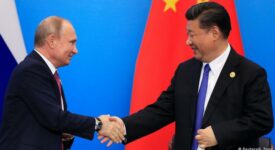The European Commission proposed two initiatives to persuade EU member states to cooperate more on defense and thus reduce waste in defense research and procurement. Currently, the majority of EU countries buy most of their arms from national suppliers. They also have the tendency to spend the vast majority of their research budgets at home, which is a good way to shield indigenous industry from competition but a wasteful way to build armed forces. Importantly, the EU collectively spends about half of what the United States does on defense and can readily deploy only 3 percent of their armed forces.
These problems were recognized long ago and in 2011, the EU promised to “pool and share” arms purchases to increase efficiency. Faced with the dilemma of awarding part or all of a defense contract to a foreign bidder or supporting the industry at home, EU governments invariably opted for helping domestic industry. To motivate member states, the EU executive is now offering two types of financial incentives to reconsider.
One initiative that was launched this year offers direct grants to groups of at least 8 countries that choose to do research and development of military technology together. Another tool to pool money will be launched in 2019 to co-finance the development and purchase of promising new weapons systems if at least 3 countries join their forces.
The Commission hopes that governments will find the cash offer attractive enough, which will prompt them to abandon their protectionist stance. Despite the promise of €5.5 billion, the actual amounts committed are much more modest. The total sum of funding set aside for research grants this year is €25 million, a small fraction of the cumulative €8.8 billion ($9.9 billion) that EU countries spent on defense research and development in 2014. However, the amounts allocated to development of promising prototypes are bigger: €500 million ($563 million) for both 2019 and 2020, although compared with total EU spending on defense investment – €34 billion ($38 billion) in 2014 – the money is relatively modest.
The European Commission says that the current funding is just for a start and it already plans to quadruple the money after 2020. The plan is to increase funds for joint military research 20 times the same year but EU spending planned 7 years ahead of time and the current period ends in 2020 and nothing has been planned beyond that horizon yet. Moreover, with the UK leaving the EU, there will be less money available.
The Commission is trying hard to motivate EU countries and is right to focus on positive incentives. Financial inducements could prove effective and with EU cash on the table, defense and finance ministers will have a powerful reason to avoid the less efficient national procurement and promote collaboration.
‘Cajoling Europe Into Cooperating on Defense’ – Op-Ed by Tomáš Valášek – Carnegie Europe.
(The Op-Ed can be downloaded here)







